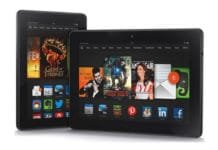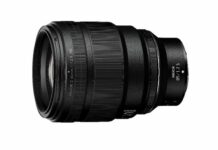The original AV receivers controlled a radio, an amplifier
and two speakers, end of story. Now receivers control the entire host of audio video equipment available for home theaters. From
surround sound systems with 11 speakers and 4 four subwoofers to Blu-ray
players to projectors, AV receivers do it all. Manufacturers facing stiff
competition constantly try to one up each other. Everyone wants to be the first
to release a receiver with a component no one else has. Keep reading to find out about the latest
developments in AV receiver technology.
and two speakers, end of story. Now receivers control the entire host of audio video equipment available for home theaters. From
surround sound systems with 11 speakers and 4 four subwoofers to Blu-ray
players to projectors, AV receivers do it all. Manufacturers facing stiff
competition constantly try to one up each other. Everyone wants to be the first
to release a receiver with a component no one else has. Keep reading to find out about the latest
developments in AV receiver technology.
SEE ALSO: Benefits and Disadvantages of Technology in the Home
| Image is licensed under CC Attribution |
Control 4
Last year Sony debuted two AV receivers featuring Control4
home automation technology. AV receivers already control the theater portion of
your home; Control4 extends that capability to the rest of your home. These
receivers offer complete home theater control, including thermostats, lights
and door locks.
home automation technology. AV receivers already control the theater portion of
your home; Control4 extends that capability to the rest of your home. These
receivers offer complete home theater control, including thermostats, lights
and door locks.
Audyssey MultEQ XT32
Audyssey continues to upgrade their MultEQ room correction
technology. The latest version, MultEQ XT32 gathers more than 10,000 data
points to determine the acoustic problems in your room. Then it uses filters on
all your speaker channels to correct for these problems and create a harmonious
soundscape. The receiver does the work of balancing and leveling your speakers
for you.
technology. The latest version, MultEQ XT32 gathers more than 10,000 data
points to determine the acoustic problems in your room. Then it uses filters on
all your speaker channels to correct for these problems and create a harmonious
soundscape. The receiver does the work of balancing and leveling your speakers
for you.
InstaPrevue HDMI
Once you connect your receiver to all your devices, it
performs many hidden functions such as amplifying and decoding sound. The main
interaction users have with receivers is switching inputs, from Blu-ray player
to cable box, for example. InstaPrevue HDMI makes switching between HDMI
connected devices simpler. Can’t remember whether the DVD player is plugged into
HDMI1, HDMI2 or HDMI3? InstaPrevue brings up a small video from each device so
you don’t have to guess. The image is a thumbnail captured from each input
source. Instead of choosing from a list of HDMI ports, you choose an image from
your cable box if you want to watch TV or from the last game you were playing
if you are trying to switch to your console.
performs many hidden functions such as amplifying and decoding sound. The main
interaction users have with receivers is switching inputs, from Blu-ray player
to cable box, for example. InstaPrevue HDMI makes switching between HDMI
connected devices simpler. Can’t remember whether the DVD player is plugged into
HDMI1, HDMI2 or HDMI3? InstaPrevue brings up a small video from each device so
you don’t have to guess. The image is a thumbnail captured from each input
source. Instead of choosing from a list of HDMI ports, you choose an image from
your cable box if you want to watch TV or from the last game you were playing
if you are trying to switch to your console.
MHL Compatibility
MHL stands for Mobile High-Definition Link. MHL compatible
receivers can display your smart phone’s screen on your TV or projector screen
in high definition. This means you can see your Angry Birds game on a big
screen or use a mobile streaming app to stream high definition shows on your
TV.
receivers can display your smart phone’s screen on your TV or projector screen
in high definition. This means you can see your Angry Birds game on a big
screen or use a mobile streaming app to stream high definition shows on your
TV.
Bluetooth
Bluetooth in a receiver means that you can stream audio from
your Bluetooth phone, tablet, mp3 player or computer to your receiver. High end
models stream wirelessly.
your Bluetooth phone, tablet, mp3 player or computer to your receiver. High end
models stream wirelessly.
Wi-Fi
Wi-fi enabled receivers take out the middle man. Instead of
connecting your receiver to a mobile device or computer to stream music or
videos, you can use the receiver to stream. Now you can access Netflix, Pandora
and other streaming sites directly through your receiver.
connecting your receiver to a mobile device or computer to stream music or
videos, you can use the receiver to stream. Now you can access Netflix, Pandora
and other streaming sites directly through your receiver.
Lower Energy Use
Many receiver manufacturers are making an effort to make
receivers that use less energy than older models. Apart from the obvious benefits
to the environment and utility bills, receivers gain advantage from reduced
energy requirements. AV receivers
combine powerful amps and relatively delicate preamps in one device. Since the
dawn of the receiver audiophiles have been nervous about housing large, power
hungry amplifiers with more fragile electronic equipment. Lowering the
receiver’s energy requirement minimizes this concern.
receivers that use less energy than older models. Apart from the obvious benefits
to the environment and utility bills, receivers gain advantage from reduced
energy requirements. AV receivers
combine powerful amps and relatively delicate preamps in one device. Since the
dawn of the receiver audiophiles have been nervous about housing large, power
hungry amplifiers with more fragile electronic equipment. Lowering the
receiver’s energy requirement minimizes this concern.
About the author:
Leave your comments below to let us know what you think about this article.
 Sydney
Sydney
About the Author:
Sydney is an avid writer and reader. She works for a home theater company in Houston.








